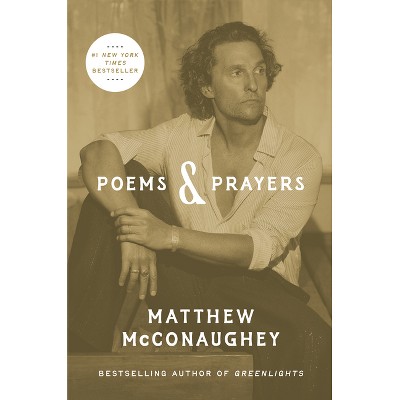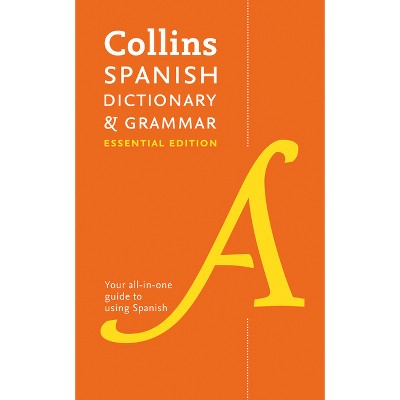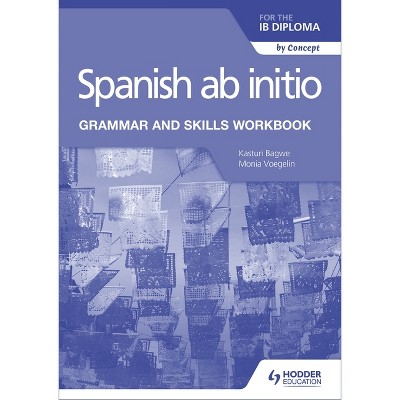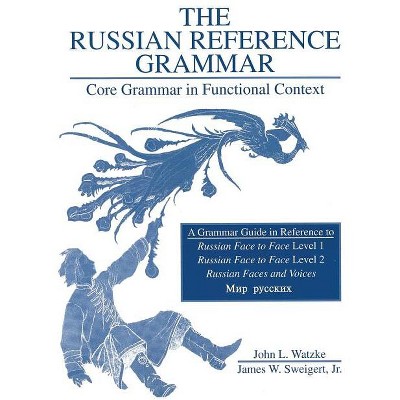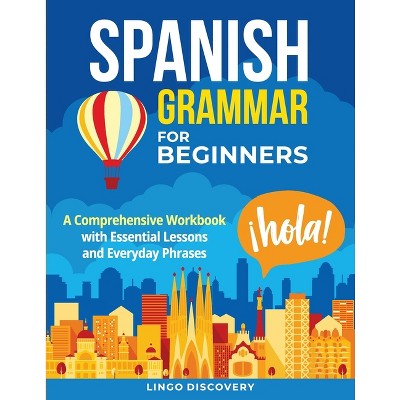Sponsored

Spanish Grammar Companion for Teachers - by Philip W Klein (Paperback)
In Stock
Sponsored
About this item
Highlights
- This textbook boosts the confidence of persons teaching Spanish as a second language, who may lack confidence in their understanding of tricky areas of expression.
- About the Author: Philip W. Klein is Associate Professor Emeritus of Spanish Language and Linguistics at the University of Iowa (USA).
- 232 Pages
- Education, Language Experience Approach
Description
Book Synopsis
This textbook boosts the confidence of persons teaching Spanish as a second language, who may lack confidence in their understanding of tricky areas of expression. Their previous training did not enable them to control (much less explain to others) the many "danger zones" which challenge graduate students serving as teaching assistants, in-service teachers, and others who use Spanish professionally. It offers original and insightful analyses, abundant examples and helpful English comparisons. It disarticulates the machinery of grammar into manageable parts.
It is not intended for those beginning to learn Spanish (since it skips the basics to focus on the "rough spots"), but is directed to those who know Spanish well, yet need to overcome their nagging limitations in obtuse areas, e.g. subjunctive, reflexives, pronouns (neuter, relative, personal), adjective placement, ser/estar, preterite/imperfect, commands, gender, passive and impersonal expressions. There arespecial sections devoted to words easily confused with each other, use of the accent mark, irregular verbs, and sentence structure.
It is useful for self-study and to supplement texts in composition, culture and linguistics courses. It benefits native-speaker teachers unfamiliar with the "why" of their language, as well as buttressing anglophone instructors of scant linguistic background. The result is a better prepared teacher and a more promising learning experience for the students.
From the Back Cover
This textbook boosts the confidence of persons teaching Spanish as a second language, who may lack confidence in their understanding of tricky areas of expression. Their previous training did not enable them to control (much less explain to others) the many "danger zones" which challenge graduate students serving as teaching assistants, in-service teachers, and others who use Spanish professionally. It offers original and insightful analyses, abundant examples and helpful English comparisons. It disarticulates the machinery of grammar into manageable parts.
It is not intended for those beginning to learn Spanish (since it skips the basics to focus on the "rough spots"), but is directed to those who know Spanish well, yet need to overcome their nagging limitations in obtuse areas, e.g. subjunctive, reflexives, pronouns (neuter, relative, personal), adjective placement, ser/estar, preterite/imperfect, commands, gender, passive and impersonal expressions. There are special sections devoted to words easily confused with each other, use of the accent mark, irregular verbs, and sentence structure.
It is useful for self-study and to supplement texts in composition, culture and linguistics courses. It benefits native-speaker teachers unfamiliar with the "why" of their language, as well as buttressing anglophone instructors of scant linguistic background. The result is a better prepared teacher and a more promising learning experience for the students.
Review Quotes
"The book ends with a well-organized topic index, preceded by a robust glossary of grammatical terms. Beginning Spanish instructors, as well as more seasoned pedagogues, will certainly benefit from having Spanish Grammar Companion for Teachers: Linguistic Insights for Deeper Understanding in their libraries ... especially those interested in the sociolinguistic aspects of Spanish language ... . Spanish Grammar Companion for Teachers: Linguistic Insights for Deeper Understanding provides language educators a highly useful pedagogical reference for language teaching." (Consuelo Sigüenza-Ortiz, Hispania, Vol. 108 (1), 2025)
About the Author
Philip W. Klein is Associate Professor Emeritus of Spanish Language and Linguistics at the University of Iowa (USA). He holds a Ph.D. in linguistics from the University of Washington and has wide experience living and working in both Spain and Spanish America. He has taught Spanish language (grammar and composition) and Hispanic linguistics (phonology and morphosyntax) at universities in Canada and in the USA for many years and is author of numerous publications in Spanish linguistics and pedagogy.


